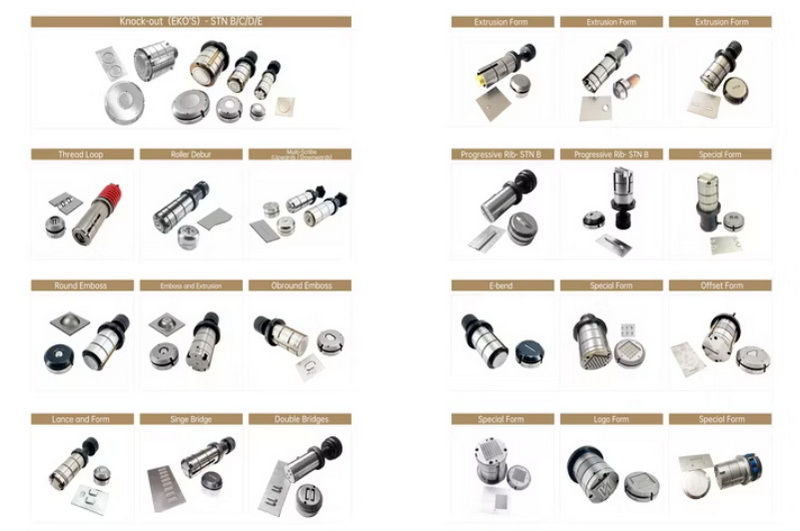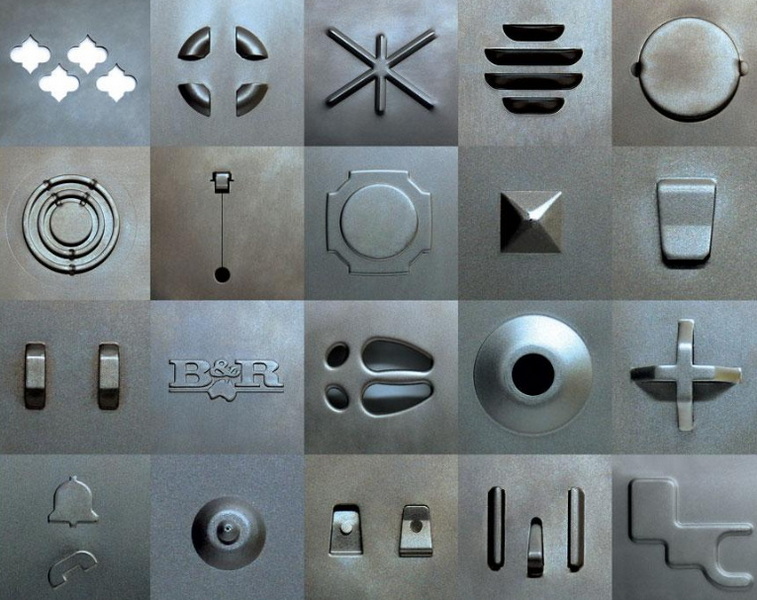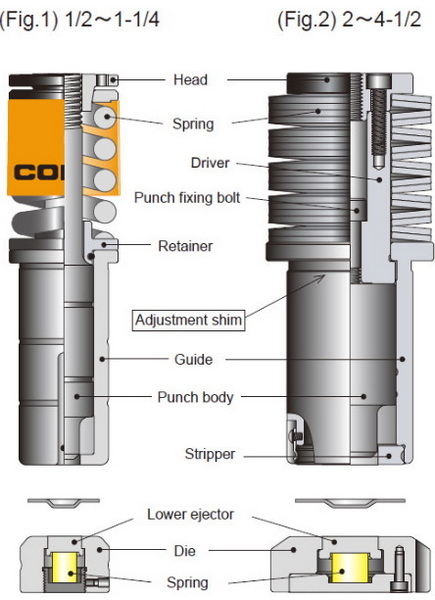Content Menu
● Introduction to Extrusion Machines
>> Plastic Extrusion Machines
>> Metal Extrusion Machines
● Types of Form Tools for Extrusion Machines
>> 1. Dies for Plastic Extrusion
>> 2. Form Tools for Metal Extrusion
>> 3. Stretch Forming Dies
● Form Tools for Automatic Extrusion Machines
>> Form Tool Design Considerations
>> Advantages of Automated Form Tools
● Conclusion
● FAQ
>> 1. What are the primary types of extrusion machines used in the plastics industry?
>> 2. How do metal extrusion machines differ from plastic extrusion machines?
>> 3. What is the role of stretch forming dies in extrusion?
>> 4. What are the key considerations when designing form tools for automatic extrusion machines?
>> 5. How do automated form tools benefit the extrusion process?
● Citations:
Extrusion machines are versatile devices used across various industries, including plastics, metals, and food processing. These machines rely on form tools to shape the extruded material into the desired form. In this article, we will explore the different types of form tools used in extrusion machines, focusing on their applications, designs, and functionalities.

Introduction to Extrusion Machines
Extrusion machines work by pushing or pulling material through a die to create a continuous product. The process involves heating the material until it becomes molten and then forcing it through a shaped die to achieve the desired form. This technique is widely used in the production of plastic sheets, pipes, profiles, and metal components.
Plastic Extrusion Machines
Plastic extrusion machines are commonly used for producing items like plastic sheets, pipes, and profiles. The process involves using single-screw or twin-screw extruders, depending on the complexity of the product and the need for additives.
Single-Screw Extruders: These machines use a single rotating screw to melt and mix plastic granules before pushing them through a die. They are ideal for simple extrusion processes and are widely used in the plastics industry for making products like pipes, films, and sheets[1][4].
Twin-Screw Extruders: These machines employ two intermeshing screws, providing enhanced mixing and processing capabilities. They are suitable for complex formulations and high-throughput applications, often used when special colors or attributes are required[1][4].
Metal Extrusion Machines
Metal extrusion machines, such as those offered by Kinefac, use cold forming techniques to produce precise axial forms on metal shafts. These machines are designed for high precision and can create complex geometries like splines and serrations[2].
Types of Form Tools for Extrusion Machines
Form tools in extrusion machines are critical for shaping the extruded material into the desired form. Here are some of the key types of form tools used:
1. Dies for Plastic Extrusion
- Sheet Dies: Used in plastic sheet extrusion, these dies are flat and produce a continuous film that can be trimmed into various products[1].
- Tubing Dies: These dies are used for producing pipes and tubes, such as PVC and ABS piping[1].
- Blown Film Dies: Used in blown film extrusion, these dies create a semi-solid tube that is expanded with air pressure to form plastic films[1].
2. Form Tools for Metal Extrusion
- Cold Forming Dies: These are used in metal extrusion machines like Kinefac's KINEXTRUDE to produce precise axial forms on metal shafts. They can create complex geometries such as splines and serrations[2].
3. Stretch Forming Dies
Stretch forming is a process used primarily in the aerospace industry to form aluminum extrusions into complex shapes. The dies used in this process are contoured to match the desired shape of the final product[3].

Form Tools for Automatic Extrusion Machines
Automatic extrusion machines rely on precise and efficient form tools to maintain high production rates and product quality. These tools are designed to work seamlessly with automated systems, ensuring consistent output and minimizing downtime.
Form Tool Design Considerations
When designing form tools for automatic extrusion machines, several factors must be considered:
- Material Compatibility: The tool must be compatible with the material being extruded to prevent wear and tear.
- Precision: The tool must be precise to ensure that the extruded product meets the required specifications.
- Durability: The tool should be durable to withstand continuous use without needing frequent replacements.
Advantages of Automated Form Tools
- Increased Efficiency: Automated form tools can significantly increase production efficiency by reducing manual intervention.
- Consistency: They ensure consistent product quality by maintaining precise control over the extrusion process.
- Cost Savings: By minimizing waste and reducing the need for manual adjustments, automated form tools can lead to cost savings.
Conclusion
Extrusion machines rely heavily on form tools to shape materials into desired forms. From plastic sheet dies to metal cold forming dies, each type of form tool plays a crucial role in the extrusion process. Understanding the different types of form tools and their applications is essential for optimizing production processes and ensuring high-quality products. The integration of form tools with automatic extrusion machines further enhances efficiency and consistency, making them indispensable in modern manufacturing.

FAQ
1. What are the primary types of extrusion machines used in the plastics industry?
- The primary types include single-screw and twin-screw extruders. Single-screw extruders are used for simple processes, while twin-screw extruders are ideal for complex formulations[1][4].
2. How do metal extrusion machines differ from plastic extrusion machines?
- Metal extrusion machines, like Kinefac's KINEXTRUDE, use cold forming techniques to produce precise axial forms on metal shafts, whereas plastic extrusion machines melt and shape plastic materials[2].
3. What is the role of stretch forming dies in extrusion?
- Stretch forming dies are used primarily in the aerospace industry to form aluminum extrusions into complex shapes by wrapping them around a contoured die[3].
4. What are the key considerations when designing form tools for automatic extrusion machines?
- Key considerations include material compatibility, precision, and durability to ensure efficient and consistent production[10].
5. How do automated form tools benefit the extrusion process?
- Automated form tools increase efficiency, ensure consistency, and lead to cost savings by minimizing waste and manual adjustments.
Citations:
[1] https://plasticextrusiontech.net/machines-used-in-the-plastic-extrusion-process/
[2] https://www.kinefac.com/extrusion-machines/
[3] https://beckwoodpress.com/triform-presses-old/stretch-forming/
[4] https://www.macocorporation.com/blog/extruder-machine/
[5] https://www.freepik.com/free-photos-vectors/extrusion-machines
[6] https://www.youtube.com/watch?v=y77H1aQjaoU
[7] https://www.conairgroup.com/resources/resource/extrusion-processing-basic-guide-to-auxiliary-equipment/
[8] https://www.shutterstock.com/search/extrusion-machine
[9] https://www.youtube.com/watch?v=98GXll1J8sk
[10] https://engitech.in/extrusion-machines-and-extruders-guide/
[11] https://www.conic.co.jp/en/tech/punch_press_tools/vol10.html
[12] https://wilsontool.com/en-us/solutions/punching/connective-forms













